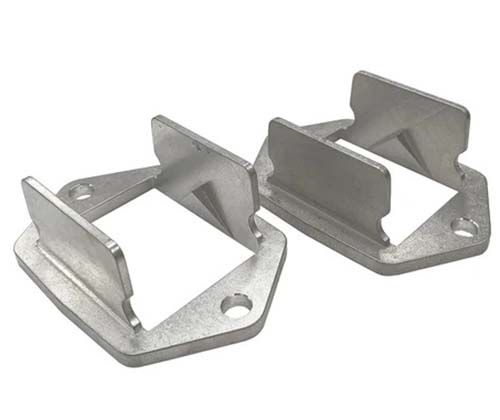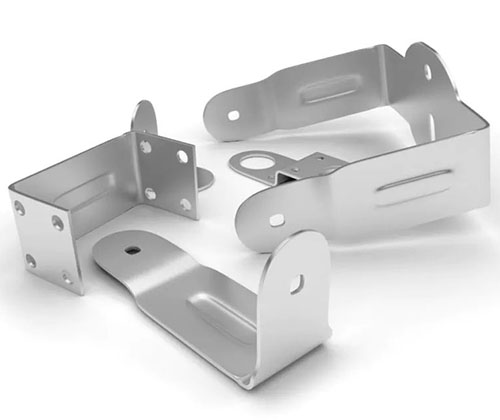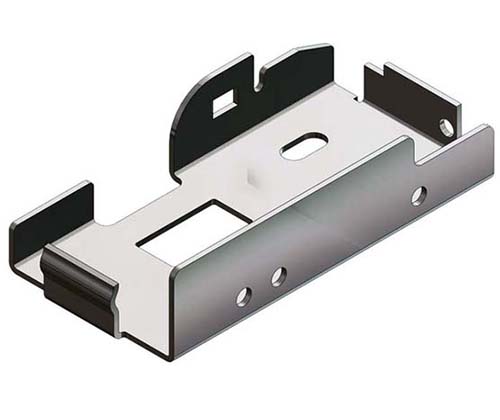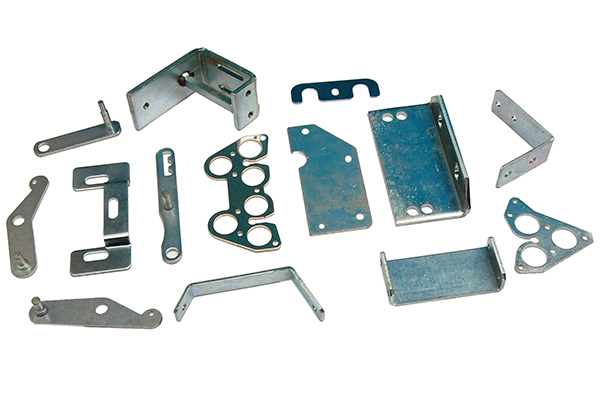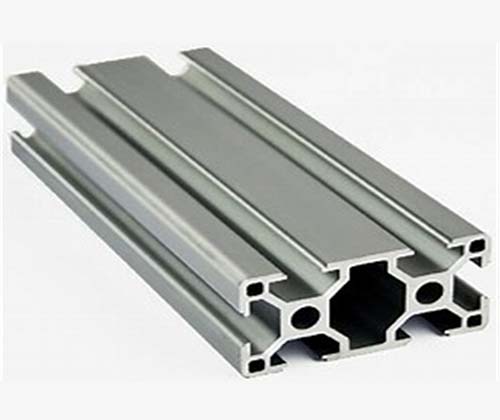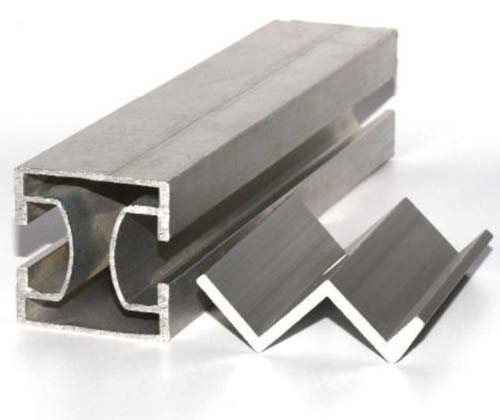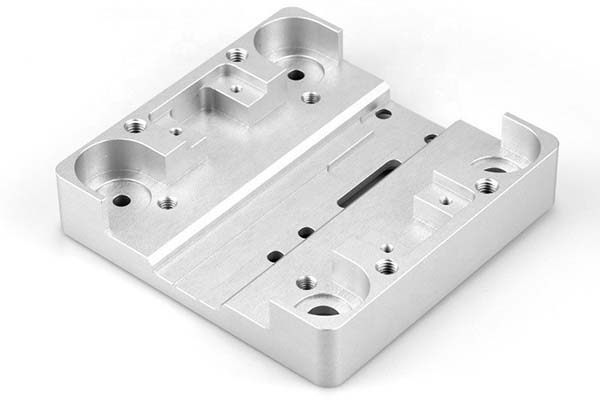Introduction
In modern manufacturing, die casting parts play a pivotal role across a vast array of industries. From the automotive sector, where they are used in engine components and chassis parts, to the electronics industry, where they form the sturdy casings for various devices, die casting parts are everywhere. This article aims to explore the numerous advantages of die casting parts in manufacturing, helping manufacturers, engineers, and product designers make informed decisions when choosing the right manufacturing methods for their projects.
1. High - Precision and Complex Geometries
1.1 Intricate Designs with Ease
One of the most remarkable advantages of die casting parts is their ability to achieve intricate designs with relative ease. Die casting is a process where molten metal is forced into a mold cavity under high pressure. This high - pressure injection allows the metal to flow into every nook and cranny of the mold, replicating even the most complex shapes accurately.
For Yigu Technology example, in the automotive industry, engine components such as cylinder heads are prime examples of complex die - cast parts. Cylinder heads have multiple chambers, passages for coolant and oil, and intricate ports for the intake and exhaust of gases. These components require a high level of complexity in their design to ensure optimal engine performance. With die casting, manufacturers can produce cylinder heads that meet these complex design requirements, providing the necessary functionality for efficient combustion and heat dissipation.
Another example is in the aerospace industry, where components need to be lightweight yet strong. Die - cast parts can be designed with complex internal structures, such as lattice or honeycomb patterns, which significantly reduce weight while maintaining structural integrity. These complex internal structures would be extremely difficult, if not impossible, to achieve with other manufacturing methods like traditional machining or simple casting.
1.2 Tight Tolerances
Die casting parts are also known for their ability to maintain tight tolerances. Tolerance refers to the allowable deviation from a specified dimension. In die casting, the tolerance range can be quite narrow, depending on the type of alloy used and the complexity of the part.
Typically, die - cast parts made from aluminum alloys can achieve tolerances in the range of ±0.05 - ±0.15 mm for small to medium - sized parts. For zinc - alloy die - castings, the tolerance can be even tighter, often in the range of ±0.03 - ±0.1 mm. In contrast, sand casting, a more traditional casting method, usually has a tolerance range of ±0.5 - ±1.0 mm. This significant difference in tolerance makes die casting the preferred choice when high - precision parts are required.
Take the manufacturing of electronic components as an example. Components such as connectors and housings need to fit together precisely. Die - cast parts can be produced with such tight tolerances that they can be assembled without the need for additional machining or finishing operations in many cases. This not only saves time but also reduces costs associated with secondary processing. Tight tolerances also ensure better performance and reliability of the final product. In mechanical systems, for instance, parts with tight tolerances fit together more snugly, reducing wear and tear and improving the overall efficiency of the system.
2. High - Production Efficiency
2.1 Rapid Cycle Times
Die casting is renowned for its extremely rapid cycle times, which is a major advantage in high - volume manufacturing. The cycle time in die casting refers to the time it takes to complete one full production cycle, from injecting the molten metal into the mold to ejecting the finished part.
Modern high - speed die - casting machines can achieve cycle times as short as 5 - 15 seconds for small to medium - sized parts. For Yigu Technology example, in the production of small zinc - alloy die - cast parts used in electronics, such as the small housings for some electronic components, the cycle time can be as low as 5 seconds. This is in stark contrast to other manufacturing methods. For instance, investment casting, which is also used for producing metal parts with relatively high precision, typically has a cycle time of several minutes to even hours. In investment casting, the process involves creating a wax pattern, coating it with a ceramic shell, melting out the wax, and then pouring in the molten metal. Each of these steps takes time, resulting in a much longer overall cycle time.
The short cycle times in die casting are made possible by the high - pressure injection system and the efficient cooling mechanism. The high - pressure injection forces the molten metal into the mold cavity quickly, and the mold is designed with cooling channels that can rapidly dissipate heat, solidifying the metal in a short period. This allows for a continuous and fast production process, making die casting an ideal choice for manufacturers who need to produce a large number of parts in a short time.
2.2 Mass Production Feasibility
Die casting is highly suitable for mass production due to its rapid cycle times and the durability of the molds. Die - casting molds are typically made of high - strength steel alloys, which can withstand the high pressure and temperature during the casting process. These molds can be used to produce hundreds of thousands, or even millions, of parts before they need to be replaced.
Take the automotive industry as a prime example. Car manufacturers produce millions of vehicles each year, and die - cast parts are used extensively in these vehicles. Components like engine blocks, transmission cases, and wheel hubs are often die - cast. A major automotive manufacturer might produce a particular model of car with a production volume of 500,000 units per year. For each vehicle, there could be dozens of die - cast parts. With die casting's ability to produce parts quickly and consistently, it can meet the high - volume production demands of the automotive industry.
Another example is the consumer electronics industry. Companies that produce smartphones, tablets, and laptops require large quantities of die - cast parts for device casings and internal components. These companies often produce millions of units of their products annually. Die casting enables them to manufacture the necessary parts in large volumes while maintaining high quality and consistent dimensions, ensuring that each product meets the required standards. In addition, the high - volume production in die casting also leads to cost savings per unit. As the number of parts produced increases, the fixed costs associated with mold making, equipment setup, and overhead are spread out over a larger number of units, reducing the overall cost per part.
3. Material Advantages
3.1 Diverse Alloy Options
Die casting offers a wide range of alloy options, each with its unique properties and advantages, making it suitable for a variety of applications.
Aluminum alloys are one of the most commonly used materials in die casting. They are favored for their low density, which is about one - third that of steel. This makes aluminum - alloy die - cast parts ideal for applications where weight reduction is crucial, such as in the automotive and aerospace industries. For Yigu Technology example, in automotive engines, aluminum - alloy die - cast parts like engine blocks can significantly reduce the overall weight of the engine, improving fuel efficiency. Aluminum alloys also have excellent corrosion resistance. They form a thin, protective oxide layer on their surface when exposed to air, which prevents further oxidation and corrosion. This makes them suitable for use in outdoor applications or in environments where there is a risk of moisture and chemical exposure. Additionally, aluminum alloys have good thermal conductivity, which is beneficial in applications like heat sinks for electronic devices. They can effectively dissipate heat, ensuring the proper functioning of the electronics.
Zinc alloys are another popular choice for die casting. They have high dimensional stability, which means they can maintain their shape and size accurately over time. This makes them ideal for producing precision parts, such as small components for watches, electronics, and household appliances. Zinc alloys also have good mechanical properties, including high strength and hardness, and they are relatively easy to cast due to their low melting point. Moreover, zinc - alloy die - cast parts often have a smooth surface finish, which can reduce the need for additional surface - finishing operations.
Magnesium alloys are known for their extremely low density, even lower than that of aluminum alloys. They have a high strength - to - weight ratio, making them highly desirable in the aerospace and automotive industries, where lightweight yet strong components are essential. For instance, in aerospace applications, magnesium - alloy die - cast parts can be used in the construction of aircraft interiors and structural components, contributing to weight savings and fuel efficiency improvements. Magnesium alloys also have good damping properties, which means they can absorb vibrations effectively. This makes them suitable for applications where reducing noise and vibration is important, such as in the manufacturing of some high - end electronic devices and automotive components.
3.2 Good Mechanical Properties
Die - cast parts generally exhibit excellent mechanical properties. For example, in terms of strength, die - cast aluminum alloys such as A380 can have a tensile strength of around 300 - 330 MPa. This strength allows them to withstand significant mechanical loads, making them suitable for use in engine components and structural parts in vehicles. In comparison, die - cast zinc alloys like ZA - 8 have a tensile strength in the range of 275 - 325 MPa, which is also quite substantial for many applications.
The hardness of die - cast parts is another notable mechanical property. Aluminum - alloy die - cast parts can have a Rockwell hardness (HRB) of around 60 - 80, depending on the specific alloy and heat - treatment process. Hardness is crucial as it determines the part's resistance to wear and deformation. In industrial machinery, for example, die - cast parts with high hardness can ensure a longer service life and better performance.
Die - cast parts also have good fatigue resistance. Fatigue resistance refers to a material's ability to withstand repeated loading and unloading cycles without failure. In applications such as automotive suspension components, which are subjected to continuous cyclic loads during vehicle operation, the fatigue resistance of die - cast parts is essential. Die - cast parts made from appropriate alloys can endure a large number of fatigue cycles, ensuring the safety and reliability of the vehicle over an extended period.
4. Cost - Effectiveness in the Long Run
4.1 Initial Tooling Costs vs. Long - Term Savings
It's true that the initial investment in die - casting tooling can be relatively high. Die - casting molds are complex and require precision manufacturing. The cost of designing and fabricating a die - casting mold can range from several thousand to hundreds of thousands of dollars, depending on the size, complexity, and the materials used in the mold. For example, a medium - sized, moderately complex aluminum - alloy die - casting mold for an automotive component might cost around \(50,000 - \)100,000. This high initial cost can be a deterrent for some manufacturers, especially those with limited budgets or those considering small - scale production.
However, when looking at the long - term perspective, especially for high - volume production, the cost - effectiveness of die casting becomes evident. As the number of parts produced increases, the fixed cost of the tooling is spread out over a larger number of units. This results in a significant reduction in the per - unit cost. For instance, if a mold costs \(100,000 and is used to produce 100,000 parts, the tooling cost per part is \)1. But if the same mold is used to produce 1,000,000 parts, the tooling cost per part drops to just $0.1. In high - volume manufacturing scenarios, where millions of parts might be produced, the long - term savings in tooling costs can be substantial.
4.2 Reduced Secondary Processing
Die - casting parts often require less secondary processing compared to parts produced by other manufacturing methods, which is another significant cost - saving advantage. Due to the high precision and good surface finish achievable in die casting, many parts can be used almost immediately after being removed from the mold.
For example, in the production of die - cast aluminum alloy parts for consumer electronics, the surface finish of the die - cast parts can be smooth enough that no additional polishing or finishing operations are needed in many cases. In contrast, parts produced by sand casting typically have a rougher surface and may require extensive machining, grinding, and polishing to achieve the desired surface quality. These secondary processing operations not only add to the cost of labor but also increase the consumption of materials and energy. Each additional processing step also adds time to the production cycle, which can impact overall production efficiency. With die - casting parts, the reduced need for secondary processing can lead to cost savings of up to 30% - 50% in some cases, depending on the complexity of the part and the required level of finishing.
5. Surface Finish and Quality
5.1 Smooth Surface as - Cast
Die - casting parts typically have an excellent surface finish right after the casting process. The surface roughness of die - cast parts can reach a relatively low level. For example, for aluminum - alloy die - cast parts, the surface roughness can be in the range of Ra0.8 - 3.2μm. This smooth surface as - cast is a significant advantage.
In the production of high - end consumer electronics, such as smartphones and tablets, the casing parts are often die - cast. These devices require a smooth and aesthetically pleasing surface. Die - cast parts can meet this requirement directly out of the mold, eliminating the need for extensive surface - finishing operations to achieve a smooth texture. In the production of decorative components, like the decorative frames for high - end watches or jewelry boxes, the smooth surface of die - cast parts can enhance the overall appearance and luxury feel of the product. A smooth surface also reduces the risk of dust and dirt accumulation, which is beneficial for products that need to maintain a clean appearance over time.
Yigu Technology's Perspective
Yigu Technology firmly believes that die casting parts offer significant advantages in the manufacturing industry. Their high precision, high - efficiency production, and cost - effectiveness make them an ideal choice for a wide range of applications. In the customization of non - standard plastic metal products, Yigu Technology fully exploits the advantages of the die - casting process. By leveraging the ability to achieve complex geometries and tight tolerances, we can provide high - quality solutions that meet the diverse needs of our customers. Whether it's developing innovative designs for new products or improving the performance of existing components, Yigu Technology is committed to delivering excellence in die - cast parts manufacturing.
FAQ
1. What types of materials are commonly used for die casting parts?
Common materials for die casting parts include aluminum alloys, zinc alloys, and magnesium alloys. Aluminum alloys, with a density about one - third that of steel, are great for weight - sensitive applications like in automotive and aerospace. They also have good corrosion resistance and thermal conductivity. Zinc alloys offer high dimensional stability and are often used for precision parts in electronics and household appliances. Magnesium alloys, being extremely lightweight with a high strength - to - weight ratio, are ideal for aerospace and automotive components where reducing weight is crucial.
2. How accurate are the dimensions of die casting parts?
The dimensional accuracy of die casting parts is quite high. For aluminum - alloy die - cast parts, the tolerance can be in the range of ±0.05 - ±0.15 mm for small to medium - sized parts. Zinc - alloy die - castings can achieve even tighter tolerances, usually in the range of ±0.03 - ±0.1 mm. These tight tolerances make die - cast parts suitable for applications where precise fits are required, such as in mechanical assemblies and electronic components.
3. Is die casting suitable for small - batch production?
Die casting is generally not the most cost - effective choice for small - batch production. The initial investment in die - casting molds is high, and for small production volumes, the cost per part remains relatively high as the fixed cost of the mold cannot be spread out over a large number of units. However, if the design requires the high - precision and complex geometries that die casting can offer, and the cost can be justified by the product's functionality or quality requirements, it can still be considered for small - batch production. In some cases, rapid prototyping die - casting techniques can also be used to reduce the initial investment for small - batch production.

